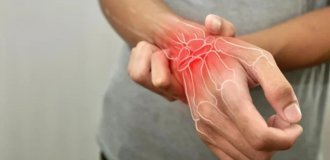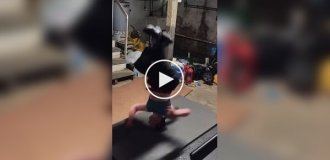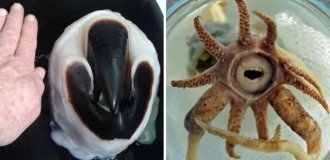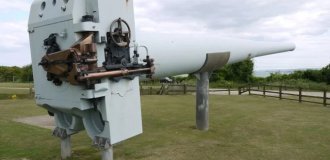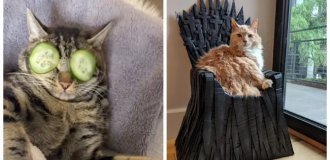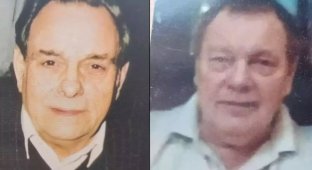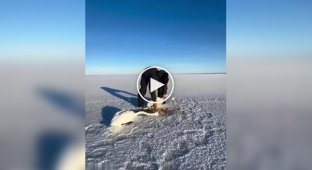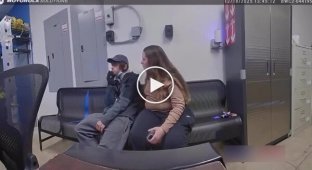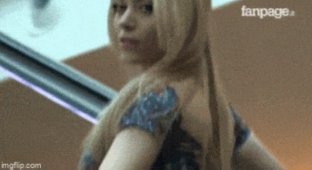Mysterious fireproof material - fiction or reality? (6 photos)
Is it possible for a material to exist that can withstand temperatures of 10,000 degrees Celsius? In 1986, an ordinary man named Maurice Ward did just that. The special plastic he invented could easily withstand even a nuclear flash, which in laboratory conditions would turn a thick piece of steel into a puddle. Ward's granddaughter named the product Starlite. 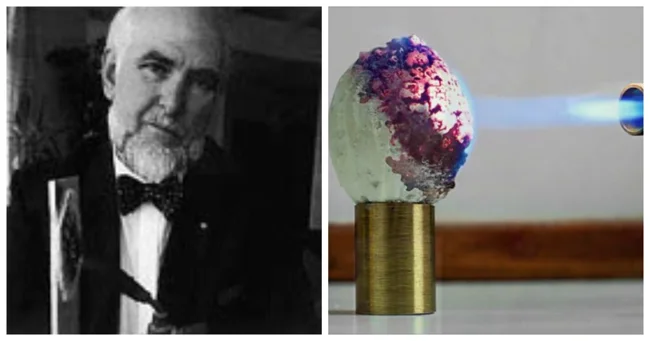
However, his creation never appeared on the market. In fact, he kept his invention such a closely guarded secret that when Maurice died in 2011, the secret went to the grave with him.
Maurice Ward was not a chemist. He was an ordinary, albeit talented, hairdresser from Hartlepool in Yorkshire, England, who simply wanted to help people. His inspiration, unfortunately, came from tragedy. In 1985, 55 passengers died on board a British Airways flight within half a minute of a fire breaking out during takeoff. But they didn’t die from heat or flames. They died from inhaling toxic smoke and fumes. Maurice had identified the problem. His next step was to find a solution.
From Barber to Inventor 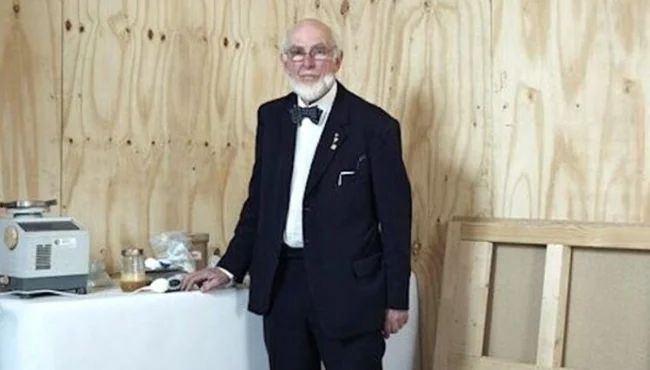
Maurice Ward
Maurice spent years learning how to formulate and mix his own hair dyes. Ward's solutions were uncopyable. Together with his wife Eileen and four daughters, he ran a salon that enjoyed great popularity. Clients came to him from all over the country.
At the same time, the hairdresser never went to university and had no special education in chemistry.
The Need for a New Thermal Barrier 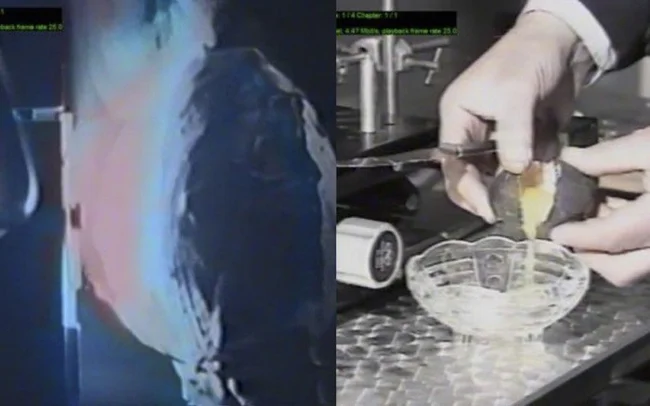
NATO Starlite test on egg using nuclear pulses. Egg remains raw after test
When Ward got into plastic recycling, he bought an extruder. The more time he spent with his new toy, the more he lost interest in his main job. But eventually he got a bad extruder material, which turned out to be ordinary scrap. Ward threw it away and forgot about the failure until he learned about the tragedy on the news in 1985.
Maurice was so fascinated that he decided to see if he could create a substance that could withstand intense heat without releasing toxic smoke or gases. He threw himself into the work. And eventually discovered the formula for Starlite. Although Ward refused to answer questions about how he created the material, he did reveal some secrets.
The mysterious substance was based on a combination of 21 polymers and copolymers with the addition of ceramics. While it was strong, able to withstand a nuclear flashpoint and a melting point at least three times higher than diamond, it was said to be flexible, pliable, and able to take and maintain desired shapes.
TV Appearance 
Fragment of the program "Tomorrow's World"
News about the Starlite materials reached the creators of the BBC program "Tomorrow's World". In March 1990, Starlite was demonstrated in action on the program. First, an egg was treated with it. Then an acetylene blowtorch with a temperature of 1200 degrees Celsius was directed at the egg. The flame could not cause the slightest harm. Not only did the shell not burn, but the yolk inside remained raw even after continuous exposure for five minutes. The show's host, Peter Macann, picked up an egg with his bare hand, cracked it open, and demonstrated to the shocked audience that Starlite was highly effective as a thermal barrier. Inside the shell, it was only about 35 degrees Celsius - barely warm.
So Maurice had somehow developed a material that had endless possibilities and applications.
In further tests, Starlite-coated cables were exposed to 10,000 degree Celsius light sources designed to simulate a real nuclear explosion in a lab setting. Technicians took before and after photos, and the samples remained intact.
In additional tests conducted by NATO at the White Sands Missile Range in New Mexico, Starlite-coated eggs survived both a simulated nuclear explosion and a full-scale nuclear explosion. Starlite was found to change the known rules of thermodynamics.
Laser Barrier 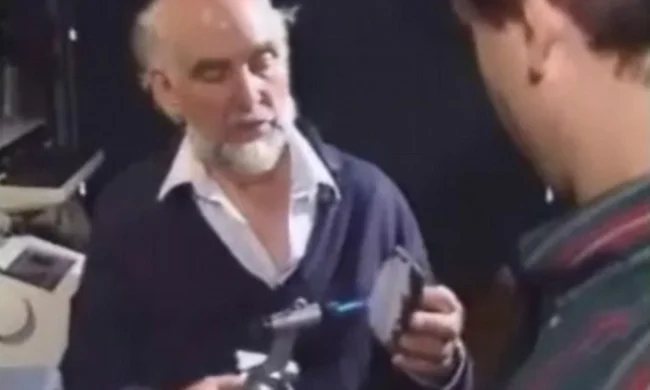
Further tests were carried out at the Royal Signals and Radar Establishment (RSRE) in Malvern. Starlite was hit with lasers capable of burning through even the hardest polymers. When the tests were completed, Starlite showed only minor damage. There were tiny pits on the surface no wider than the diameter of the laser beam, but there was no sign of melting. 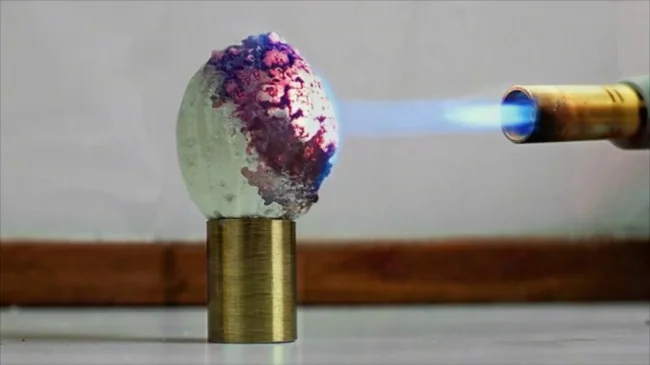
Now that Starlite was big news, Ward's phone was ringing off the hook. The number of potential investors was staggering. But the creator was determined to keep his formula a closely guarded secret, and even refused to patent Starlite. He responded to every offer to get a sample with a simple "no", without explanation.
Ward negotiated with several organisations, including Boeing, NASA and the UK Ministry of Defence. Ward seemed more concerned about his inability to defend himself in court. He still had great faith in Starlite. However, trying to negotiate a favourable deal for himself had earned him a dubious reputation as an unreliable negotiator. He allegedly asked for £1 million one day, then raised the price by 10 times the next.
The End of Starlite?
Maurice Ward died in 2011 without having applied for a patent. He claimed that some of his inner circle knew about the formula, but there was no confirmation or denial. About two years before his death, Ward seemed sincere in his intentions to start manufacturing the mysterious plastic. But he never got the chance. Perhaps Starlite will make a comeback in the coming years. Or it will disappear into oblivion forever.

